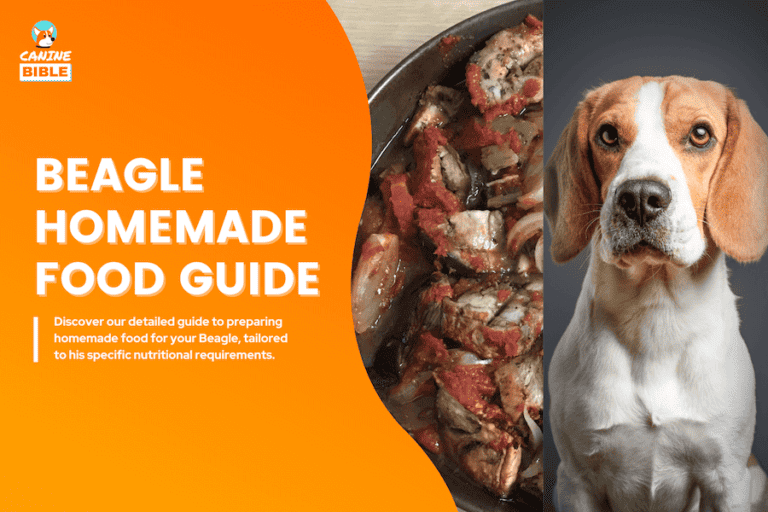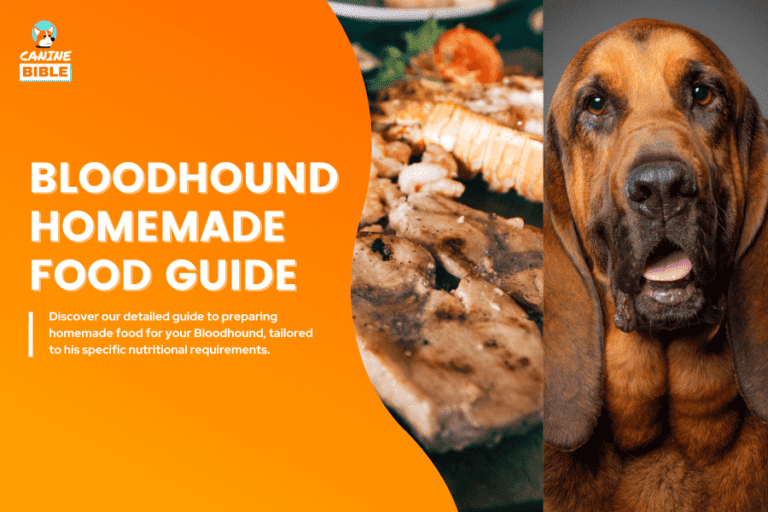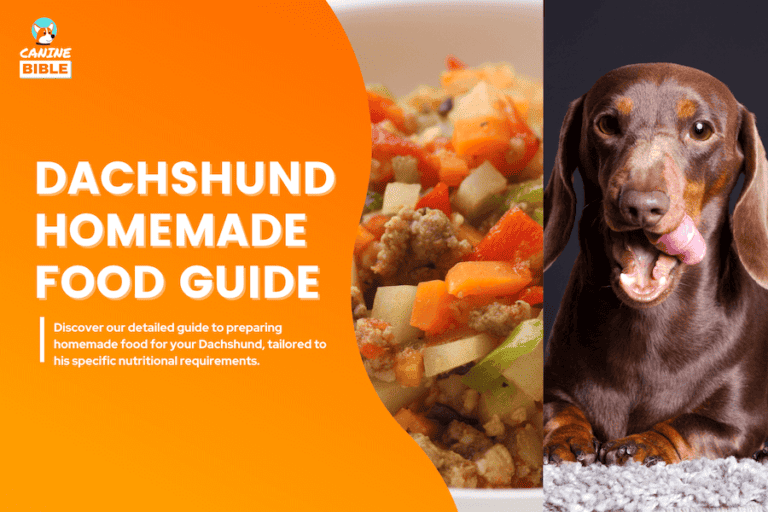Can Diabetic Dogs Have Peanut Butter?

Canine Bible is reader-supported. We receive affiliate commissions via some of our links. This doesn’t affect rankings. Learn more.
Peanut butter is a popular dog treat, but can diabetic dogs eat peanut butter? Does peanut butter affect blood sugar levels in dogs? As with any treat or food, it’s essential to consider the impact on a dog’s blood sugar levels, especially if you have a diabetic dog. In this article, we’ll explore the relationship between peanut butter and diabetic dogs, whether peanut butter is safe for diabetic dogs to eat, the risks, and everything in between. Let’s get started!
What Is Diabetes in Dogs?
Diabetes, also known as sugar diabetes or diabetes mellitus, is a chronic condition affecting how a dog’s body processes glucose. Glucose is the body’s primary energy source and is regulated by insulin. In dogs with diabetes, the pancreas is not producing enough insulin, or the body cannot use insulin effectively, leading to increased blood sugar levels. Very high blood sugar levels can cause life-threatening complications in dogs, such as diabetic ketoacidosis, a condition caused by the body needing to break down fat as a source of energy, causing cells to starve for vital fuel. High sugar levels in the bloodstream can damage many organs, including the kidneys, eyes, heart, blood vessels, or nerves.
How Does Peanut Butter Affect Blood Sugar Levels in Diabetic Dogs?
The glycemic index of peanut butter and carbohydrates are the main factors affecting dogs’ blood sugar.
The glycemic index (GI) is a 100-point scale that ranks foods according to how quickly the food’s carbohydrates (food that contains sugar) are absorbed into the bloodstream. Foods that digest slowly and release sugar gradually into the bloodstream have a lower GI score.[1] Peanut butter (peanuts) has a GI score of 14, making them a low GI food.[2] This means that their carbohydrates are absorbed into the bloodstream slowly, providing a source of energy for dogs without causing spikes in their blood sugar levels. This can help diabetic dogs maintain stable blood glucose levels.
A study showed that the primary determinant of glucose response in dogs is the diet’s starch [carbohydrates] content.[3]
Is Peanut Butter Good For Diabetic Dogs?
One good aspect of peanut butter is that peanuts are a good source of magnesium. A diet high in magnesium benefits a diabetic dog since diabetic dogs tend to have low magnesium levels. Dogs can also benefit from eating peanut butter, which provides protein and a range of vitamins and minerals.
Peanut butter is perfect for healthy dogs but not entirely suitable for diabetic dogs. While the low glycemic index of peanuts may suggest that peanut butter is good for diabetic dogs, there are still some risks. Many store-bought peanut butter (even dog-friendly ones) may contain added sugars, significant amounts of fat and calories that can raise blood sugar levels, leading to a higher risk of developing complications.
Is Peanut Butter Safe For Diabetic Dogs?
Peanut butter can be a safe treat for diabetic dogs but requires careful consideration and moderation. Some veterinarians may recommend giving peanut butter as a treat before meals, as it can help slow down glucose absorption into the bloodstream. Peanuts have even been shown to help lessen the spike in blood sugar. Peanuts (peanut butter) are a low glycemic food containing healthy oils, protein, and fiber that positively affect blood sugar control.
It is always best to consult a veterinarian before making any dietary changes for a diabetic pet.
Can Diabetic Dogs Have Peanut Butter?
Diabetic dogs can eat peanut butter if their vet has approved it and given them clear feeding guidelines. However, diabetic dogs should only eat high-quality peanut butter without added sugar and organic peanuts in moderation.
Nonetheless, peanut butter is relatively high in calories, so your vet may advise against it, depending on your dog’s diabetes type and medical evaluation. Preventing blood sugar spikes is imperative when caring for a diabetic canine. That is why Dr. Jeff Werber, the chief veterinarian of the Century Veterinary Group in Los Angeles, California, recommends that diabetic dogs stay away from carbohydrates as much as possible. The more carbs we give the body, the more sugar is produced, which can spike blood sugar levels.
If you like to spoil your diabetic pooch, choose treats that won’t spike his blood glucose levels, such as peanuts or diabetic dog-specific treats.
Best Peanut Butter For Diabetic Dogs
The best peanut butter for diabetic dogs is homemade peanut butter. It’s the healthiest and most natural alternative if you use peanuts as the only ingredient. You can also opt for dog-friendly peanut butter brands. Just be sure it meets these requirements:
Is Peanut Butter Bad For Diabetic Dogs?
It’s also important to note that not all dogs with diabetes can tolerate peanut butter. After eating peanut butter, some dogs may experience digestive problems, such as upset stomachs or diarrhea. In such cases, it’s best to avoid giving them this treat.
Diabetic dogs also tend to develop pancreatitis, which can be caused by overeating peanut butter or foods high in fat. Diabetes is a severe health condition in dogs, and you must work closely with your vet before giving peanut butter to your dog.
Monitoring Diabetic Dog After Feeding Peanut Butter
Normal blood glucose levels in dogs range from 80 to 120 mg/dl. When looking at the blood glucose levels of a diabetic dog, ideally, the highest glucose reading of the day should fall around 200 mg/dL.[4]
To monitor a pet’s glucose at home after eating peanut butter, you will need a dog glucose monitor, glucose test strips, lancets, a lancing device, a sharps container, and potentially a glucose curve test. The glucose test strips should match the glucose monitor and be checked for expiration before each use. A lancing device is used to collect blood samples. Used needles and syringes should be stored in a sharps container. A glucose curve test may be done at a vet’s office to establish a baseline of the pet’s glucose levels over 12 hours.
Monitoring helps to ensure that your dog has minimal side effects from blood sugar levels that are too high or too low, which will hopefully help to prevent long-term complications from diabetes.
Possible Side Effects & Risks of Peanut Butter in Diabetic Dogs
Dog’s glucose levels that regularly exceed those upper boundaries may develop problems such as:
Blood sugar that goes too low (hypoglycemia), defined as under 80 mg/dL, is also problematic.
If you suspect your dog is reacting badly to peanut butter, do not wait; contact your vet immediately. Can’t reach your vet? Contact the Pet Poison Helpline at 1-855-764-7661, video chat with a vet nutritionist through Vetster, or chat with a veterinary professional through our online vet chat (24 hours a day, 7 days a week).
Are Diabetic Dogs Allergic To Peanut Butter?
There’s also a chance your dog could be allergic or sensitive to peanut butter. We suggest you do an at-home dog food allergy test before giving your dog peanut butter to help you determine if your pup is sensitive or intolerant to this food — or any other foods. If not, you should be fine with giving dogs peanut butter in moderation. Sometimes allergies result in facial swelling, skin reaction, difficulty breathing, rashes, or even vomiting.
How to Manage Insulin Dosing While Eating Peanut Butter
The primary treatment for regulating blood glucose in diabetic dogs is insulin injections twice daily and dietary changes.[5] If you give your dog peanut butter, your veterinarian will recommend a starting dose based on your pet’s weight and diet.
Frequently Asked Questions
Are Diabetic Dogs Allowed to Eat Peanut Butter? — Conclusion
Limited studies exist on the effects of peanut butter on diabetic dogs. More evidence is needed to confirm that peanut butter is helpful for dogs with diabetes. Peanut butter can be a healthy treat for diabetic dogs. However, choosing a brand specifically formulated for dogs is important. Ensure the peanut butter contains neither added sugars nor low-calorie fats.
Additionally, feeding peanut butter in moderation and only with your vet’s approval is crucial. You should monitor your dog’s blood sugar levels after feeding them peanut butter to ensure it does not negatively impact them.
Like It? Subscribe & Share!
Sources
Canine Bible uses only high-quality sources, including peer-reviewed studies, to support the facts within our articles. Read our editorial process and product review methodology to learn more about how we fact-check, test products, and keep our content accurate, reliable, and trustworthy.
- Reliable Glycemic Index (GI) values
- Peanuts As Functional Food
- Glycemic & Insulinemic Responses
- Monitoring & Managing Dog Glucose
- Insulin Treatment in Dogs
Canine Bible authorship represents the unified voice of our entire editorial team and our in-house veterinarians rather than a single author. Each article, blog post, and review published under the Canine Bible name undergoes a rigorous review process, involving all team members to guarantee accuracy and up-to-date in accordance with the latest veterinarian research. This collaborative effort is an integral part of our editorial process and aligns with our four pillars of content creation. This approach ensures our content is backed by expert knowledge and factual information, offering our readers reliable, actionable, and trustworthy content.



![Best Shih Tzu Homemade Dog Food Recipes: Puppy & Adult [Guide]](https://www.caninebible.com/wp-content/uploads/2023/08/Shih-Tzu-Homemade-Dog-Food-1-768x512.png)




